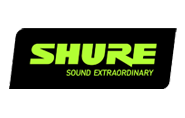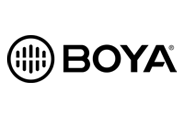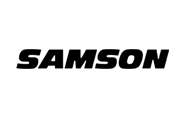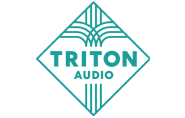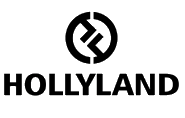You have no items in your shopping cart.
wireless frequencies
Available frequency space for wireless microphones
The use of a wireless microphone mainly takes place in the UHF broadcasting band.
The frequency ranges in this band in which use is permitted are listed below.
Licenses the Netherlands
In the Netherlands you can use the following frequencies without a license:
| THE NETHERLANDS |
||
| Frequency | Max. | |
| 195-202 MHz | 50 mW e.r.p. | |
| 470-556 MHz | 50 mW e.r.p. | |
|
558-564 MHz
|
50 mW e.r.p. | |
| 566-572 MHz | 50 mW e.r.p. | |
| 574-580 MHz | 50 mW e.r.p. | |
| 582-588 MHz | 50 mW e.r.p. | |
| 590-596 MHz | 50 mW e.r.p. | |
| 598-604 MHz | 50 mW e.r.p. | |
| 614-694 MHz | 50 mW e.r.p. | |
| 736-753 MHz | 50 mW e.r.p. | |
| 821,50 - 826 MHz | 20 mW e.i.r.p. (handheld) 100 mW e.i.r.p. (bodypack) |
|
| 826 - 832 MHz | 100 mW e.i.r.p. | |
| 863-865 MHz | 10 mW e.r.p. |
European free band
|
| 1785-1805 MHz | 20 mW e.i.r.p. (handheld) 100 mW e.i.r.p. (bodypack) |
1G8
|
| 1880-1905 MHz | 1G9 | |
| 2400-2483 MHz | 2,4 GHz, WiFi | |
However, you cannot fully use the 470 - 694 MHz band in the Netherlands everywhere.
You share that space with digital broadcasting. The use of frequencies for
Digital broadcasting differs per region. This also increases the availability of frequencies
regionally different for wireless microphones. If you want to know which frequencies
you can use it at a specific location within the Netherlands, then you can use the
application Microphonetapes from the Telecom Agency.
Licenses Belgium
In Belgium you can use the following frequencies without a license:
|
BELGIUM |
|||
| Frequencies | Max. | ||
| 29.7-47 MHz | |||
| 202-209 MHz | 50 mW e.r.p. | Radio microphones | |
| 518-526 MHz | 50 mW e.r.p. | Channel 27 | Radio microphones |
| 534-542 MHz | 50 mW e.r.p. behalve provincie Hainaut | Channel 29 | Radio microphones |
|
823 - 826 MHz
|
20 mW e.i.r.p for hand-held and 100 mW e.i.r.p. for body worn | Radio microphones | |
|
826 - 832 MHz
|
100mW e.i.r.p. | Radio microphones | |
|
863-865 MHz
|
10 mW e.r.p. | ISM | Radio microphones |
| 1785 - 1805 MHz | 20 mW e.i.r.p. for hand-held and 50mW e.i.r.p. for body-worn | 1G8 | Radio microphones |
| 2400-2483 MHz | 2.4 GHz | ||
You need to apply for a license for the other frequencies.
You can do this at the Belgian Institute for Postal Services and Telecommunications.
Here you can also download a list of the permitted frequencies per region.
Licenses Germany
In Germany you can use the following frequencies without a license:
|
GERMANY |
||||
| Frequency | Max. | Technical requirements | Remarks | |
| 174-230 MHz | 50 mW e.r.p. | VHF | Radio microphone | no registration required |
| 230-250 MHz | 50 mW e.r.p. | VHF | Radio microphone | no registration required |
| 470-608 MHz | 50 mW e.r.p. | Kanal 21-37 | Radio microphone | no registration required |
| 614-694 MHz | 50 mW e.r.p. | Kanal 39-48 | Radio microphone | no registration required |
| 733-823 MHz | 50 mW e.r.p. | Kanal 54-60 | Duplex Lucke | registration required |
| 823-832 MHz | 100 mW e.r.p. | Kanal 65 | Duplex Lucke | no registration required |
| 863-865 MHz | 10 mW e.r.p. | ISM | Radio microphone | no registration required |
| 1785-1805 MHz | 82 mW e.i.r.p. | 1G8 | Radio microphone | no registration required |
| 1795-1800 MHz | 20 mW e.r.p. | 1G8 | Radio microphone | no registration required |
| 1880-1900 MHz | 250 mW e.r.p. | 1G9 | Radio microphone | no registration required |
| 2400-2483 MHz | 2.4 GHz | Radio microphone |
no registration required |
|
You can also use the 470 - 694 MHz band, but then you first have to use one
apply for a license by downloading a form from the Bundesnetzagentur .
You can apply for a permit for a specific location and it is valid for a maximum of 30 days.
Licenses France
In France you can use the following frequency bands for wireless microphones and wireless in-ear systems:
| FRANCE | ||
| Frequency | Max. | |
| 174 - 223 MHz | 50 mW e.r.p. | |
| 470 - 694 MHz | 50 mW e.r.p. | |
|
823 - 826 MHz
|
20 mW e.r.p. | or max. 100 mW e.i.r.p. for body-worn wireless microphones |
| 826 - 832 MHz | 100 mW e.i.r.p. | |
| 863 - 865 MHz | max. 10 mW ERP | |
| 1785 - 1800 MHz | max. 50 mW e.i.r.p. for body-worn wireless microphones, otherwise max. 20 mW e.i.r.p. | |
| 2400-2483 MHz | 2.4 GHz | |
Further Information
Link to France administrations homepage where PMSE user can apply for a license, see;
* Audio: Information of ARCEP
* Video: Information of ARCEP
Downloadable application form on the website of ARCEP,
http://www.arcep.fr/fileadmin/reprise/dossiers/licences/EN-17-54.xlsx
As long as you do not exceed the maximum performance, you do not need to apply for approval.
If you have special requests, for example for a large event, you can contact the
French government agency contact ARCEP applies for approval for up to two months.
Licenses Switserland
For Switzerland, the usable frequencies are listed in the National Frequency Allocation Plan (NaFZ).
The exact technical parameters and any restrictions, as well as a possible license requirement
are defined in the technical interface requirements (RIR).
The table below shows the permitted services and the applicable technical interface
Requirements for each frequency band in which wireless microphones can be operated without a license:
Switserland |
|||
| Frequency | Maximum Transmission power |
Technical requirements | Remarks |
| 31.4 - 39.6 MHz | 100 mW ERP | use only in the channels specified in RIR 1009-01 | |
| 174 - 223 MHz | 50 mW e.r.p. | RIR1009-02 | |
| 470 - 694 MHz | 50 mW e.r.p. | RIR1009-10 | |
| 477 - 694 MHz | 250 mW e.r.p. | RIR1009-11 | Use only in the channels specified in RIR1009-11 |
| 823 - 826 MHz | 20 mW EIRP (ca. 12 mW ERP) | RIR1009-18 | 100 mW EIRP (approx. 60 mW ERP) for wireless microphones worn on the body |
| 826 - 832 MHz | 100 mW EIRP (ca. 60 mW ERP) |
RIR1009-13 | |
| 863 - 865 MHz | 10 mW ERP | RIR1009-05 | |
| 1350 - 1400 MHz | 20 mW EIRP | RIR1009-20 | Use possible from 01.01.2020. Use only inside buildings. 50 mW EIRP for body-worn wireless microphones or with built-in spectrum scanning procedure (SSP) |
| 1785 - 1804.8 MHz | 20 mW EIRP (ca. 12 mW ERP) |
RIR1009-09 | 50 mW EIRP (ca. 30 mW ERP) for wireless microphones worn on the body or with built-in spectrum scanning procedure (SSP) |
| 2400-2483 MHz | 2.4 GHz | ||
Licences Austria
In Austria you can use the following frequency bands for wireless microphones and wireless in-ear systems:
| AUSTRIA | ||
| Frequencies | Maximum Transmission power |
|
| 174 - 223 MHz | 50 mW e.r.p. | |
| 470 - 694 MHz | 50 mW e.r.p. | |
| 823 - 826 MHz | max. 10 mW e.r.p. | Duplex Luik |
| 826 - 832 MHz | max. 10 mW e.r.p. | Duplex Luik |
| 863 - 865 MHz | max. 10 mW e.r.p. | ISM Europees vrije band |
| 1785 - 1804 MHz |
max. 20 mW e.i.r.p. (handheld) |
|
| 2400-2483 MHz | 250 mw e.i.r.p. | 2.4 GHz Wifi |
A license must be applied for for other frequencies. This also applies when the transmission power is exceeded.
Fees for license
€ 53 per transmitter
Licenses Luxembourg
APWPT microphone frequency information. License exempt frequencies / no license required
LUXEMBURG |
|||
| Frequency | Technical conditions | Technical requirements | Remarks |
| 29.7 - 47 MHz | max. 10 mW e.r.p. | ||
| 174 - 216 MHz | max. 50 mW e.r.p., | ||
| 470 - 694 MH | max. 50 mW e.r.p., | (Interface 470-786 MHz but the band 694-790 MHz no longer applicable for PMSE) | |
| 823 - 826 MHz | 20 mW e.i.r.p or 100 mW | restricted to body worn microphones see technical conditions for PMSE (including radio microphones) in Annex 3 of Decision ECC/DEC/(09)03 section 3.1 | |
| 826 - 832 MHz, | max 100 mW e.i.r.p | ||
| 863 - 865 MHz | max 10 mW e.r.p | ||
| 1492 – 1518 MHz | max 50 mW e.i.r.p, | ||
| 1785 – 1795 MHz | max 20 mW e.i.r.p or 50 mW e.i.r.p. |
restricted to body worn microphones, | |
| 1795 – 1800 MHz | max 20 mW e.i.r.p or 50 mW e.i.r.p. |
restricted to body worn microphones, | |
| 1800 – 1804.8 MHz | max 20 mW e.i.r.p or 50 mW e.i.r.p. |
restricted to body worn microphones, | |
| 1880 - 1900 MHz | DECT equipment only | ||
| 2400 - 2483 MHz | 2.4 GHz Wifi | ||
Note: Applications are authorized subject to the conditions as contained in the Radio Interfaces
Fees
No fees are foreseen
Further information
https://web.ilr.lu/FR/Professionnels/Frequences-radioelectriques/Utilisation-de-frequences/Microphones-sans-fil/Pages/default.aspx
National Frequency Allocation Table :
https://web.ilr.lu/FR/Professionnels/Frequences-radioelectriques/Utilisation-de-frequences/Plan-des-frequences/Pages/default.aspx
Where do I register?
Registration takes place at the responsible branch office of the Federal Network Agency. After the proper
Registration receives a written confirmation from the Federal Network Agency. The annual fees for the
The following years of use are also collected by the Federal Network Agency.
License-free frequencies
There are a number of frequency bands that can be used throughout Europe or even around the world without a license. To begin with, there is the so-called band gap or duplex gap (823-832 MHz). This is actually a kind of buffer between the uplink and the downlink frequencies of mobile providers. It's a very narrow piece so you can't use many systems side by side in this band. There is also an increased risk of intermodulation in this band if there are many mobile phones in the area. The same also applies to the 863 - 865 MHz band. This band is just above the frequency range that is reserved for mobile providers and, like the 823-832 MHz band, can be used in virtually all of Europe without a license.
Systems that operate on the 2.4 GHz band (2400 - 2483.5 MHz) have the great advantage that they can operate globally without license. However, this is also the disadvantage because this band is therefore very popular and is used by the most diverse devices. Microwaves, WiFi, Bluetooth ... they all use the 2.4 GHz band. Many of the consumer devices have recently moved to the 5GHz band, so hopefully it will become a bit quieter in the 2.4GHz band in the near future. Another disadvantage is that this band has a very short wavelength. The shorter the wavelength, the smaller the range is. Under ideal circumstances you should be able to reach a meter or 30, but the range will not be much larger. In practice you can use a maximum of 6 wireless microphones or in-ear systems next to each other in the 2.4 GHz band.
Developments
Due to new developments in mobile technology, the frequency landscape is constantly changing. In practice it means that there is less and less room for wireless audio. At the beginning of 2016, the 800 MHz area throughout Europe was taken into use by mobile telephone providers. Microphones in that frequency range no longer work. Of course this was announced well in advance. From January 1, 2020, you can no longer use frequencies in the 700 MHz band between 694 and 790 MHz for wireless microphones due to the introduction of 5G.




